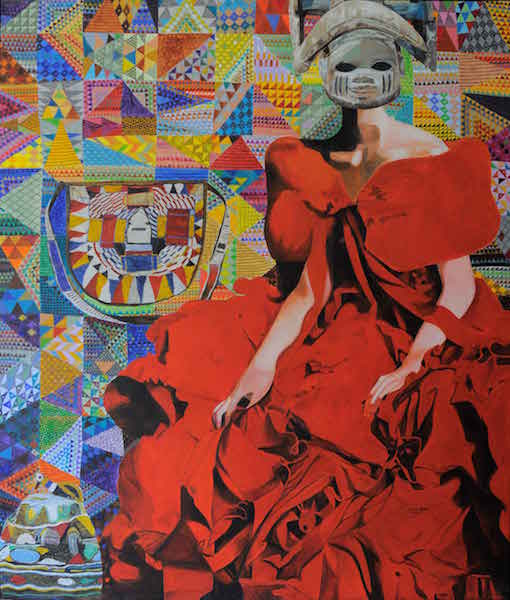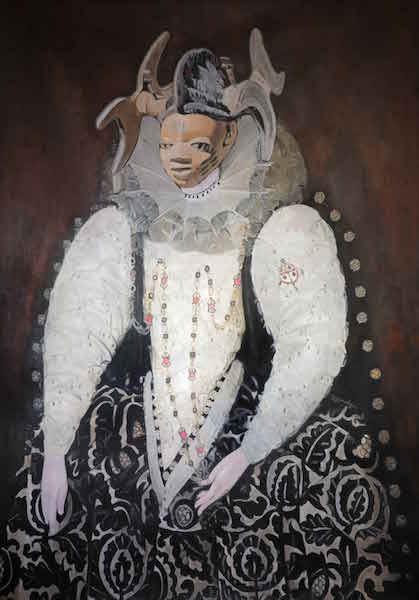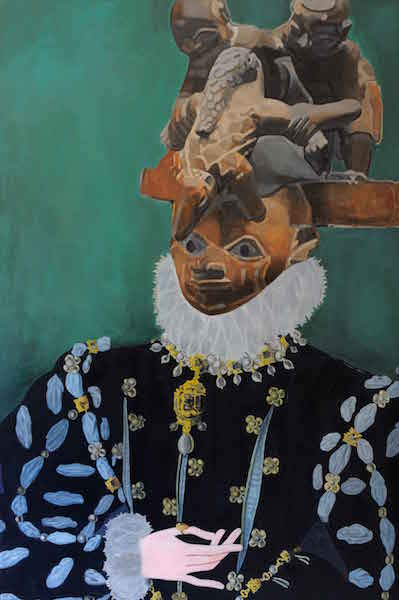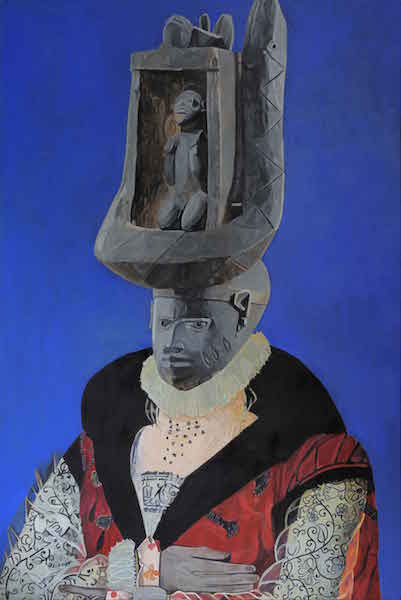
Wole Lagunju examines the foibles of imperialistic culture.
Bird of the Deities, 2015.
About:
Wole Lagunju’s recent works are about the hybridization of cultures and reinterpretation of iconic representations of women of power in Western culture. Lagunju re-contextualizes his subjects within the framework of Yoruba Gelede masks and other related beliefs and practices. His paintings transpose Gelede masks from the Yoruba people of West Africa onto classical images that document social hierarchies of the Western world.
Gelede, 2013.
Gelede is a male oriented dance for women in Yoruba culture. The dance celebrates their sacred powers, motherhood and sexuality. Lagunju’s paintings explore how the societal values of traditional Yoruba culture are documented in indigenous iconography prompting deliberations on issues of procreation, motherhood and femininity when juxtaposed with images of women from the western world.
Belle of the hearth, 2014.
Gelede masks and dances in Yoruba society satirize, parody, entertain and educate onlookers and the society at large. In the same vein, Lagunju’s work examines the foibles of imperialistic culture. As much as Gelede celebrates the powers of motherhood in Yoruba women they are also a salutation to their personal physical attributes and endowment. This is found in the meaning of the word Gelede itself. Ge means to ‘pet or tenderly deal with’, ele refers to a woman’s genitalia and de, ‘to soften them with gentleness’.
The Awakening, 2013.
In choosing representations of women of power in Western culture or the modern world, draws upon images from The Dutch Golden age, and in the English Victorian and Tudor eras. The artist takes cursory note of sex symbols and movie stars of the past and present and engages with vintage fashion and glamour of the fifties through the sixties. Whilst the images from 19th century Europe are representative of the age of colonization of some parts of the world, those of the fifties and sixties signify the era of decolonization and the independence of several African countries. More so, the fifties and sixties were the age of the counterculture, the birth of the African American civil rights movement and the rise of feminism.
Social Butterfly, 2014.
In making composite images of women and Gelede from these two eras, Lagunju challenges and critiques notions of imperialistic cultural idioms. Values and stereotypes that generate assumptions of a dominant cultural prerogative and singular historical perspective within issues of power and gender and identity. In producing his current work he has chosen to draw inferences from Yoruba culture, a culture that affirms itself as being the origin of all the other global cultures. He draws parallels between the icons of this culture and the icons in the Western society querying how the social structures of traditional societies are impacted on both positively and negatively by globalization and the hitherto blurring of the line that separate the sexes. (text and courtesy Ed Cross Fine Art, London)




